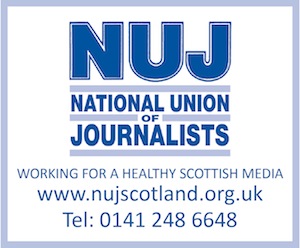THE Paisley Daily Express may have done well to notch up an impressive sales lift in the latest ABC returns, but let’s not pretend it signals a renaissance in the fortunes of our printed titles. Like the monthly national newspaper sales, the bi-annual regional and weekly figures just published paint a depressingly familiar picture of unremitting gloom across the country.
But it’s a story we know only too well, so here’s a radical thought: let’s ditch the digits of doom for a while and seek solutions from across the globe that perhaps promise a brighter and better future.
Why, for example, are newspaper sales booming in that hotbed of technology, Asia? What’s the secret of the Swedish newspaper which has won back all of its property advertising – 25 per cent of its ad revenue – from online rivals? And how does a French daily still manage to sell around 800,000 copies a day, and employ 500 journalists, in a region with the same population as Scotland?
While the UK and the USA struggle to cope with cataclysmic decline, success stories such as these are not uncommon in the rest of world. And, even in the US – which has suffered more newspaper closures than anywhere else – there’s an alternative media army on the march as ‘philanthropy journalism’, not-for-profit ventures and clever collaborations, online and in print, are giving journalists and journalism a new lease of life.
So why can’t we do the same here? Well, the ownership model of many of our historic and local newspaper titles is often too remote from the communities they were originally designed to serve; and being part of a large, debt-burdened publishing group often means there’s little scope for local investment or room for innovative risk-taking.
We also need to take a strong dose of ‘brave pills’ when examining the future of some of our respected ‘national’ titles. The Herald’s daily circulation is down to 43,157 and The Scotsman trails even further behind at 32,035. Despite their influential legacy, both titles can hardly claim to have national reach in print any longer when strong dailies such as the Press & Journal in Aberdeen (66,679) and The Courier in Dundee (53,243) outsell them by a ‘country mile’ without venturing outwith their own local patch.
Here’s another radical thought: The Herald and The Scotsman should consider weekly or bi-weekly publication, concentrating their limited journalistic resources on producing sound analysis and the kind of in-depth reporting on Scottish affairs that would differentiate them from the national UK dailies with whom they can no longer compete. Leave the daily news agenda to their online editions, which are better suited to handling breaking news, and produce a quality product of substance for their influential audiences who still like the gravitas of print.
They should also consider collaborative operations, like those happening in the US with forward-thinking universities. For example, 17 American universities now host investigative journalism hubs. And, here in Scotland, my university, Glasgow Caledonian, has recently entered into a partnership with STV to produce one of Britain’s new local TV stations, GTV, which will serve Glasgow. Student journalists from Edinburgh Napier University will also work with STV on a similar project in the east.
Philanthro-journalism is also big business in the States. Examples range from a $1million dollar grant from the Ford Foundation to help the commercially-run Los Angeles Times cover specialist reporting beats, to dozens of grants from various foundations to fund investigative and community journalism initiatives.
One of the best-known is ProPublica, an independent, non-profit news centre that produces investigative journalism in the public interest. Major quality newspapers such as The New York Times and The Washington Post, which previously would not have considered outsourcing investigations, now regularly carry ProPublica’s work. The centre employs around 40 journalists and its output, which is offered free to major news organisations, is largely funded by the Sandler Foundation and other donors.
According to the academic news website, The Conversation, collaborations on major investigations in the US have become ‘almost routine’, with mainstream media ‘outsourcing time-consuming and risky journalism to non-profit centres’. It reports that the 60 non-profit members of the American Investigative News Network have between 600 and 1,000 publication, distribution and collaboration deals with external partners, a trend that’s expected to grow over the next few years.
One of the biggest funders of American journalism projects is the Knight Foundation, which has recently awarded $2.4 million to eight mobile communication projects in its annual Knight Challenge. In total, US foundations are estimated to have funded journalism projects in the US to the tune of $250 million dollars since 2005.
Unfortunately, Scotland and the UK in general have not enjoyed the benefits of such magnanimity. Perhaps the most high-profile not-for-profit journalism venture is the Bureau of Investigative Journalism based at City University, London. It was originally funded by the Potter Foundation, but found itself under the investigative spotlight late last year after becoming embroiled in the BBC Newsnight controversy surrounding false allegations about a senior Conservative.
Investigative journalism can of course be a costly and risky business, but this vital watchdog role is essential in any democracy worthy of the name and Scotland’s indigenous media is in danger of abandoning this territory altogether unless it can find new ways of funding the gatekeepers. Equally, the future of our media shouldn’t have to depend on charity. While foundation funding would be a welcome addition to the media mix, there are numerous examples of viable commercial news organisations out there.
According to the World Press Trends 2012 survey, global newspaper circulation has grown by 4.2 per cent since 2007 in an industry that’s still worth $200 billion annually. And the good news stories don’t just come from Asia – Scandinavian and Alpine countries have the highest readership of newspapers per capita.
Like the French and Swedish examples mentioned earlier, their common success factors are not difficult to find: they tend to be locally-owned and managed; located in the heart of their communities; have tightly integrated online and print operations commercially and editorially; and concentrate on forensically reporting and supporting their local communities.
Well, at least the last point is something they have in common with the Paisley Daily Express.
Charles McGhee is a former editor of The Herald and a visiting professor in Journalism and Media at Glasgow Caledonian University.
Pic: John Young.






